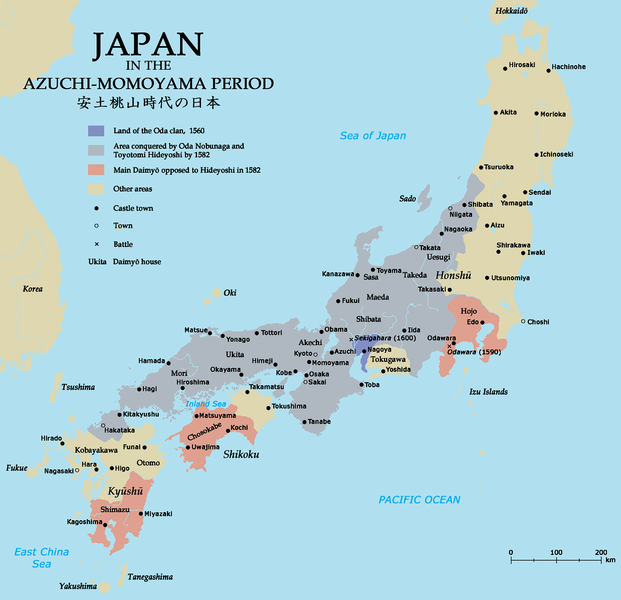As we talk about the various historical periods in class, it seems we often gravitate towards a focus on Europe and America. But obviously the world is bigger than two continents. For me, I like to hear about what was happening in Asia. I lived on the island of Hokkaido, which is the northernmost island of Japan (you can barely see the southern tip in the image to the right) from 2008-2010. Interestingly, Hokkaido was inhabited mainly by natives called the Ainu until quite recently. Japanese people didn't start moving to Hokkaido until the last few hundred years (mostly the 1800's), assimilating or wiping out the Ainu in a process similar to what happened to Native Americans.
In the 16th century, Japan was nearing the end of its Warring States period, which had lasted for a hundred years. Up to this point, Japan was actually split up into several feudal states, and it was these many feudal states that had been fighting ever since the Ashikaga shogunate collapsed. However, by the end of the 16th century, Hideyoshi had risen from the ranks of a foot soldier to succeed his feudal lord and actually unify Japan.
Another important happening in the 16th century for Japan was contact from traders and Jesuit missionaries from Portugal. This marked the first direct contact and commercial exchange with Japan and the West, and that relationship has only continued to grow. As of 2011, Japan's economy was the third largest in the world, after the US and China.
As we continue to study the historical periods in our class, its important not to forget the events happening in other parts fo the world. Technology has made the world smaller and more intertwined, and Asia has long since established its ground as a critical player in the digital economy. With the impact of Nintendo, Sony, and the many other Japanese electronics companies, Japan is a country we can't forget in our modern age.

No comments:
Post a Comment